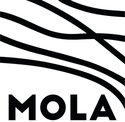Home Farm, Harmondsworth Lane, Sipson, London borough of Hillingdon
Museum of London Archaeology, 2011. https://doi.org/10.5284/1000146. How to cite using this DOI
Data copyright © Museum of London Archaeology unless otherwise stated
This work is licensed under the ADS Terms of Use and Access.
Primary contact
David
Bowsher
Director of Research
Museum of London Archaeology
Mortimer Wheeler House
46 Eagle Wharf Road
London
N1 7ED
UK
Tel: 020 7410 2285
Resource identifiers
- ADS Collection: 1035
- ALSF Project Number: 5793
- DOI:https://doi.org/10.5284/1000146
- How to cite using this DOI
Introduction

Archaeological excavations/watching briefs were undertaken by Museum of London Archaeology in phases between 1999 and 2002, on the site of Home Farm, Harmondsworth. The watching brief was commissioned by SITA in response to an application to extract gravel.
The completion of the post-excavation assessment and updated project design for the archaeological investigations at Home Farm was funded by Aggregates Levy Sustainability Fund (ALSF) administered by English Heritage. Planning condition for the aggregates extraction at Home Farm was granted in 1989 and no provision was made for the assessment, analysis or publication costs of the archaeological investigations in the relevant planning condition.
The excavation has revealed Neolithic activity, primarily pits, and elements of an extensive later prehistoric droveway and enclosure system, comprising of a series of smaller track ways, enclosures, boundary ditches, fences/palisades, drainage ditches, and livestock control features. Associated with this are cooking pits, water holes/wells and a four-post structure. Three features were either heavily truncated or token cremations, or deposits including pyre debris. This droveway/enclosure system appears to date from the later Bronze Age, and may have been abandoned in the later Iron Age.
Six fragments of moulds and/or crucibles for bronze casting, had been discarded in a Late Bronze Age well. Further analysis is required to phase and date this activity, and to determine the extent, if any, of Romano-British activity on the site. An undated feature appeared on stylistic grounds to be a Saxon sunken featured building, and stakehole and posthole structures may have been associated with it. Elements of post-medieval, and possibly medieval, field boundary and trackway ditches were also present.
The sequence provides further data for Neolithic, later prehistoric, Roman, and early Saxon activity in the Heathrow area, which directly complements that in the proposed English Heritage-funded backlog publication project 'West London Landscapes', and a recent MOLA publication on early Saxon occupation in the London region.
It is therefore proposed that this data is further analysed to allow the prehistoric and Roman phases to be published as an integral part of the West London Landscape Project and depending on the results of further analysis, for the Saxon sunken featured building to be published as a brief article in an appropriate journal.







